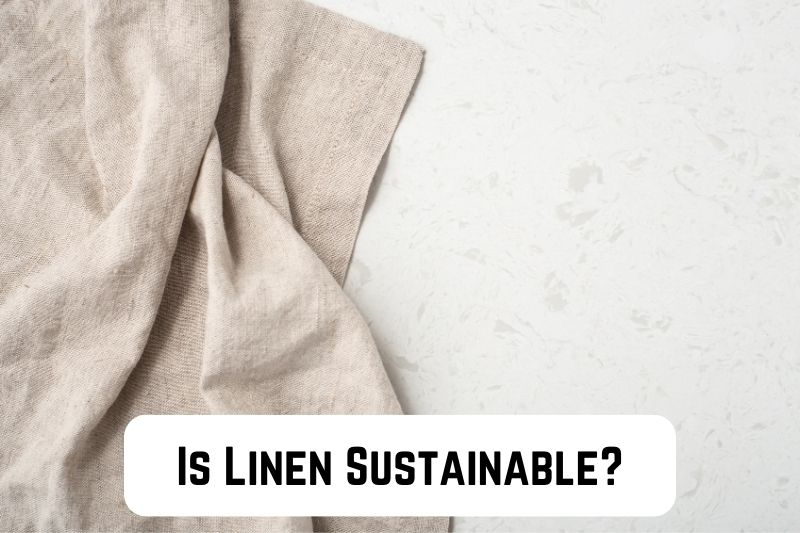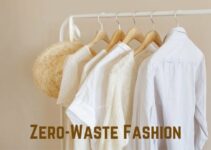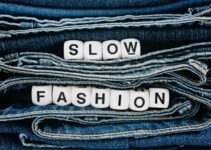Welcome to the exploration of linen, a unique, quality, and time-honoured fabric that has drawn attention in the past few years for its sustainability. In this article, we will try to dive into the ocean of linen, where we will get the eco-friendly aspects of linen, the production process – how it is made, and we will try to examine the advantages and disadvantages.
After that, we will share some tips on how to care for your linen garments from our personal experiences. So, if you are curious about linen’s environmental impact, just stay tuned because you will get the answers to your burning questions!
Read: Are Fog Machines Bad For The Environment?
Is Linen a Sustainable Fabric?
Linen is one of the most environmentally friendly fabric options due to how it’s produced and the qualities of the material. Flax, the plant used to make linen, is very sustainable to grow. It is renewable annually and doesn’t need much water or chemicals like pesticides to thrive. Flax enriches the soil as it grows by drawing nutrients to the surface.
The flax plant breaks down nitrogen in the soil as it grows, so flax fields improve soil quality over time rather than deplete it. This regenerative quality makes flax agriculture environmentally friendly.
Linen production uses less water, chemicals, energy, and land than cotton production. It has a lighter environmental footprint overall compared to other natural fabrics like cotton.
Linen fabrics last a long time and become softer with wear and washing. They are durable and do not wear out quickly like some synthetic materials. This longevity reduces textile waste. Linen is biodegradable and recyclable at the end of its useful life. It will eventually break down in soil without harming the environment.
The flax fiber used in linen is usually obtained from Europe and parts of northern Africa, so the transportation distances tend to be shorter than for fabrics from other parts of the world.
Overall, linen is considered one of the most sustainable natural fabric options due to the regenerative growing practices of flax and the durable, long-lasting qualities of the finished linen textiles. Its production has less environmental impact compared to many other common fabrics.
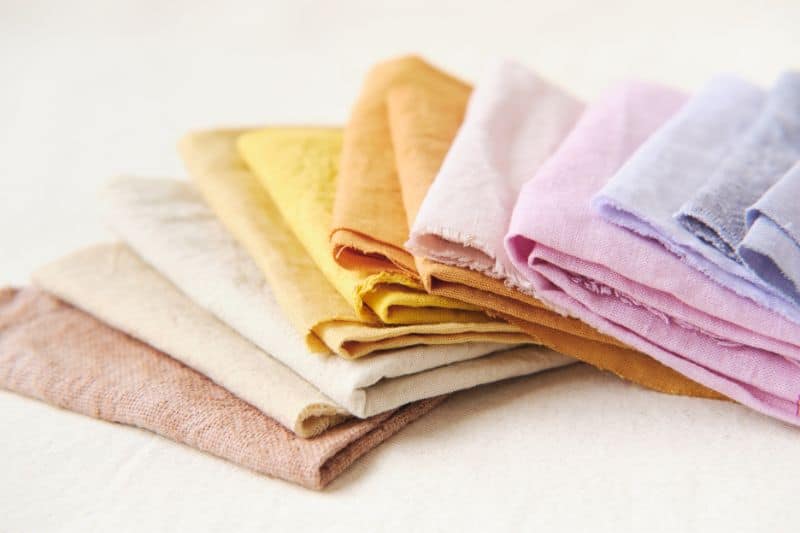
What is Linen Made of?
Linen is made of flax plants. Flax (Linum usitatissimum) is a flowering plant native to parts of Europe and Western Asia. Flax is initially blue and purple. Not the whole plant is used to make linen, but the usable part of the plant is woody stalks which can grow more than a meter tall.
These woody stalks produce fibrous cells that help to produce linen. Flax fibers are composed mainly of cellulose (70% of its total), and it makes the fiber stronger and more biodegradable as well. Other components of the flex plants, known as hemi cellulose pectin and lignin also contribute to the making of linen.
How is Linen Made?
Now let’s see step-by-step instructions on how these famous fabrics are made.
1. Flax Planting and Harvesting: In the first step, the flax plants need to be grown because this is the primary material of the fabric. Flax seeds are planted and the stalks are harvested when the plants are fully mature.
2. Retting: The harvested stalks are soaked in water for a very long time because the stalks need to be softened. This process helps the microorganisms to rot away and the outer stem gets softened so the inner layers can be easily peeled away from the body and these are the actual material for linen.
3. Scutching: The retted stalks need to be smashed. The stalks are scutched by the production house. The producers beat the stalks with a scutching board to further separate the fiber from the woody stem body. In this process, the woody stalks need to be smashed properly.
4. Hacling: The scutched fibers go through hackling, where they are combed to line up the fibers parallel to each other. This removes any remaining impurities. Any materials need to be purified before going to the next level.
5. Spinning: This is the most common feature of making any fabric. The shredded fibers are drawn out in this process and twisted to one another during the spinning to strengthen them into flax yarns.
6. Weaving: The flax yarns are then woven on looms into the final linen fabric either in its plainweave or other patterns/structures.
7. Optional Processing: The woven linen may undergo further processes like bleaching, dyeing, or calendaring (ironing) to achieve the desired color and finish.
8. Inspection and Packaging: The finished linen fabric goes through inspection and is then packaged and distributed for end uses like apparel, home goods, industrial products, and more.
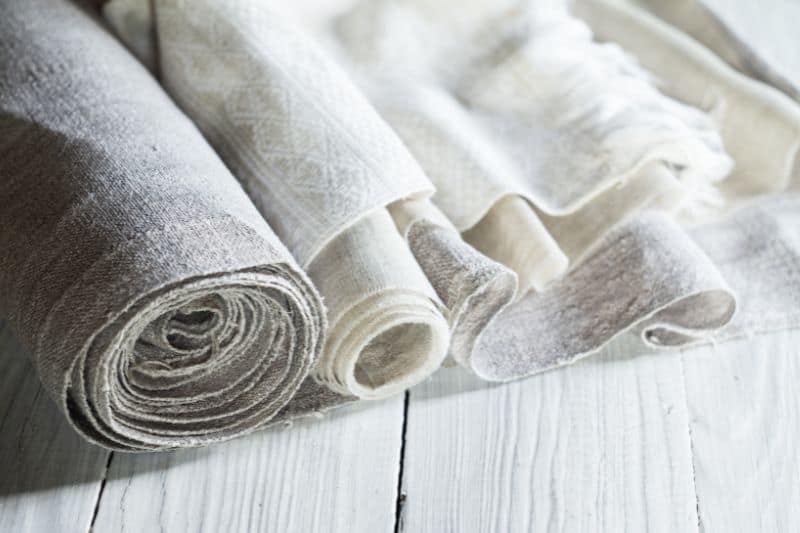
Is Linen Environment-friendly?
The answer is ‘Yes’, linen is considered one of the most environmentally friendly fabric options for several key reasons:
The main raw material of linen is flax plants. Flax grows with minimal agricultural inputs. It requires little water, no pesticides, and returns nitrogen to the soil. This regenerative cultivation is sustainable. Production of linen uses less water, energy, and chemicals compared to other natural fibers like cotton. It has a smaller overall environmental footprint.
Also, the fabric is biodegradable. Flax fibers are longer lasting and more durable than many synthetic fabrics. Linen garments will maintain their quality through many washes and years of use. Being cellulose-based, linen fabrics are biodegradable. They can break down naturally without harmful chemicals lingering in soil or waterways.
Waste streams from linen production can be reused or composted. Very little goes to landfills as unavoidable waste. Transport distances for European flax tend to be shorter than fabrics sourced from other regions, lowering emissions from distribution.
Linen’s breathability and moisture-wicking properties mean it can be worn and laundered in lower temperatures than many synthetic materials. So, it is much more comfortable to wear in hot and humid weather. Certified organic and biodynamic flax is increasingly available, assuring sustainable cultivation practices.
So, for instance, from farming through production to disposal, linen has a much lower environmental impact profile than petroleum-based synthetics or other natural fibers like cotton. It’s considered an eco-friendly fabric choice.
Advantages and Disadvantages of Linen
Everything in the world has some pros and cons. Nothing comes out full of advantages without having any sort of disadvantages. So, like many others, Linen also has some advantages and disadvantages. Here comes it!
Advantages:
- Breathable and moisture-wicking – Keeps the skin cool and dry.
- Naturally antibacterial properties. Less likely to develop odors.
- Highly durable and long-lasting. Withstands years of wear and washing.
- Wrinkle-resistant. Linen smooths out naturally with wear.
- Eco-friendly production. Flax farming is sustainable and the material biodegrades.
- Fire-resistant. Less prone to burn than other fabrics like polyester.
- Temperature regulating. Keeps body comfortable in heat and cold.
Disadvantages:
- More expensive than some other natural fabrics like cotton.
- Can wrinkle initially until it is washed and worn in. Requires ironing.
- Less elasticity and give compared to stretcher fabrics.
- Prone to creasing heavily if not dried flat or folded properly.
- Color is more likely to fade than synthetics when washed frequently.
- Can lose its shape and smoothness more readily than smooth fabrics.
- Occasionally stiff feel until it softens with washing over time.
So, we can see that while linen is very durable and eco-friendly, it requires some care and caution to avoid creasing. It also needs some cost-cutting steps to avoid high pricing compared to other fabrics. But we can not deny how softer and comfortable the fabric is!
Read: Are Gel Blasters Bad For The Environment?
How to Care For Linen?
So, here we are into the segment where you will get some very effective tips for caring for linen from my personal experience.
I always try to wash linen items on a delicate or gentle cycle in cold water. The cooler temperature helps prevent shrinkage and color fading. I avoid putting linen in the dryer if possible, as heat can be rough on the fibers. Instead, I lay flat items to air dry.
If I need to iron linen, I do so on the lowest heat setting using a damp press cloth on top of the fabric. Too much heat can damage or scorch the natural fibers. After ironing, I try to fold or store linen items loosely so they don’t crease heavily. Since linen wrinkles easily, I don’t worry too much about minor wrinkles developing over time.
I find the wrinkles relax on their own with wearing and handling. Attempting to aggressively de-wrinkle could potentially cause unnecessary wear on the fabric. If a linen piece does get overly crushed or creased, I steam it gently with an iron held a couple of inches above the surface. I let the steam work the wrinkles out naturally.
Periodically, I may refresh linen in the dryer on an air-fluff cycle to help it maintain softness. Taking good care of my linen items helps them last for years of comfortable wear.
Conclusion
Linen is one of the trendiest fabrics in the world. From kids to aged, linen serves everyone equally by its characteristics. It gives everyone a very comfortable, soft, and fresh feeling. Due to its environment-friendly characteristics, it’s becoming popular day by day.
But it is costly compared to other fabrics and needs to be ironed every time before wearing. Despite some of its disadvantages, this fabric is considered to be one of the best fabrics indeed.
